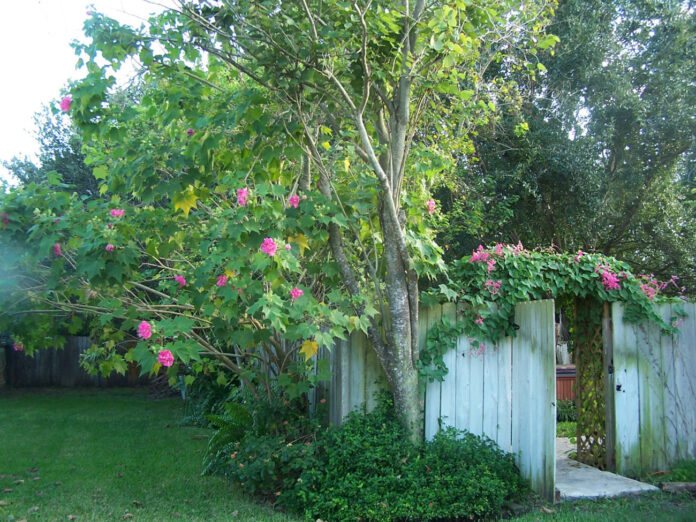By Lori Murray, Cameron County Master Gardener, Texas Superstar Specialist
March is traditionally the month we fertilize our grass here in the Rio Grande Valley. It is also a very good time to fertilize flower beds because no matter how good your soil, sooner or later it can do with a little help to nourish what you have planted there. It occurred to me that – although we know we’re supposed to fertilize – there can be some mystery about why and what, and that this would be the appropriate time to discuss the process.
First of all, three of the most important elements for plant growth cannot be added as fertilizers. They exist already in the environment in large quantities and are so common that we hardly think of them. These elements are carbon, hydrogen, and oxygen, and they come to the plant from water and from air. All the other elements needed for plant growth are found in the soil naturally in some quantity or another. Some are insufficient for maximum plant health and need to be added in one form or another, and that’s where fertilizer comes in.
The three main elements we add with commercial fertilizers are nitrogen (N), phosphorous (P), and potassium (K). All are necessary to the plant in reasonably high concentrations, and most soils are well below the optimum in one or more of them. Since the toxic level of each of them is high, they can usually be added routinely in a balanced formula (in a ratio of 1-1-1 or 1-2-1, Nitrogen-Phosphorous-Potassium).
Nitrogen is the raw material for proteins, chlorophyll, and genetic materials. It spurs growth. A lack of nitrogen results in pale foliage and spindly stems. An excess of nitrogen (hard to achieve) stimulates rank vegetative growth. Phosphorous is also the raw material for genetic materials and stimulates flower, fruit, and seed production. This is a good month to put phosphorous on your day lilies to prolong their bloom. It stimulates root growth and strong stems. A shortage of phosphorous results in weak root systems, poor growth, and decreased flowering. Potassium promotes better water movement in the plant, stimulates flower production, and increases disease resistance. It increases blossom size (and increases red pigment in red roses). A shortage of potassium is characterized by small leaves and flowers and in extreme cases can cause dried edges on leaves.
Follow the directions on the fertilizer you select and be sure to water thoroughly after the application to avoid fertilizer “burn”. If you are only feeding your grass, letting a little spray into your flower beds doesn’t hurt a thing, so be lavish in your application. Find flower fertilizer depending on what you are feeding it to. Most nurseries and garden departments offer a selection, or a trip to Grimsells or Waughs can enlighten you. Your reward will be evident within a week or two with a darker green color, good roots, and healthy grass and flowers.
Adapted from ”Elements for Plant Growth” by A.J. Warner in the Houston Rose-ette, Vol. XXVII, No. 5




